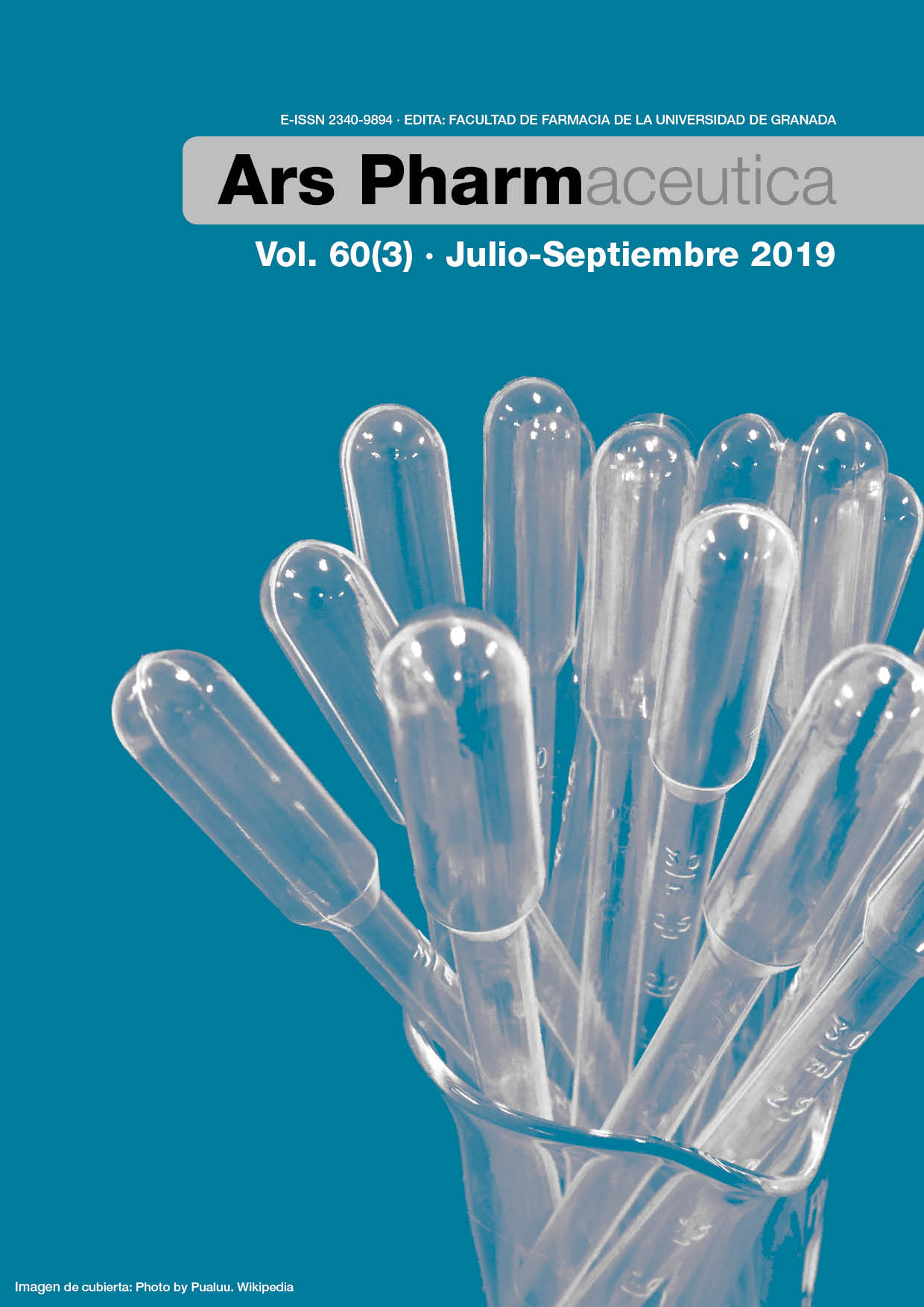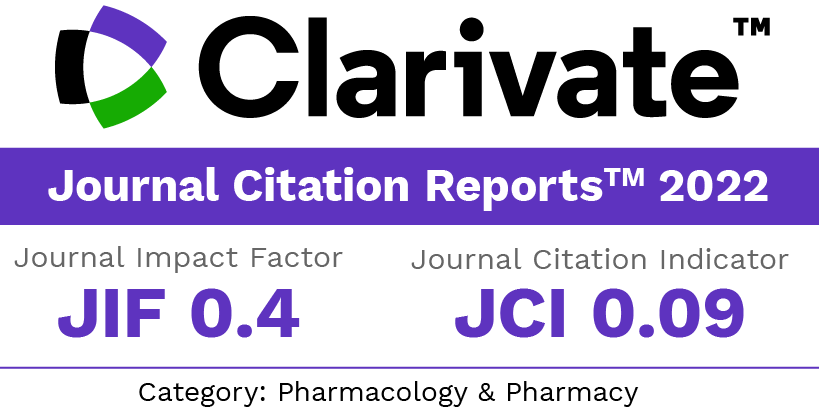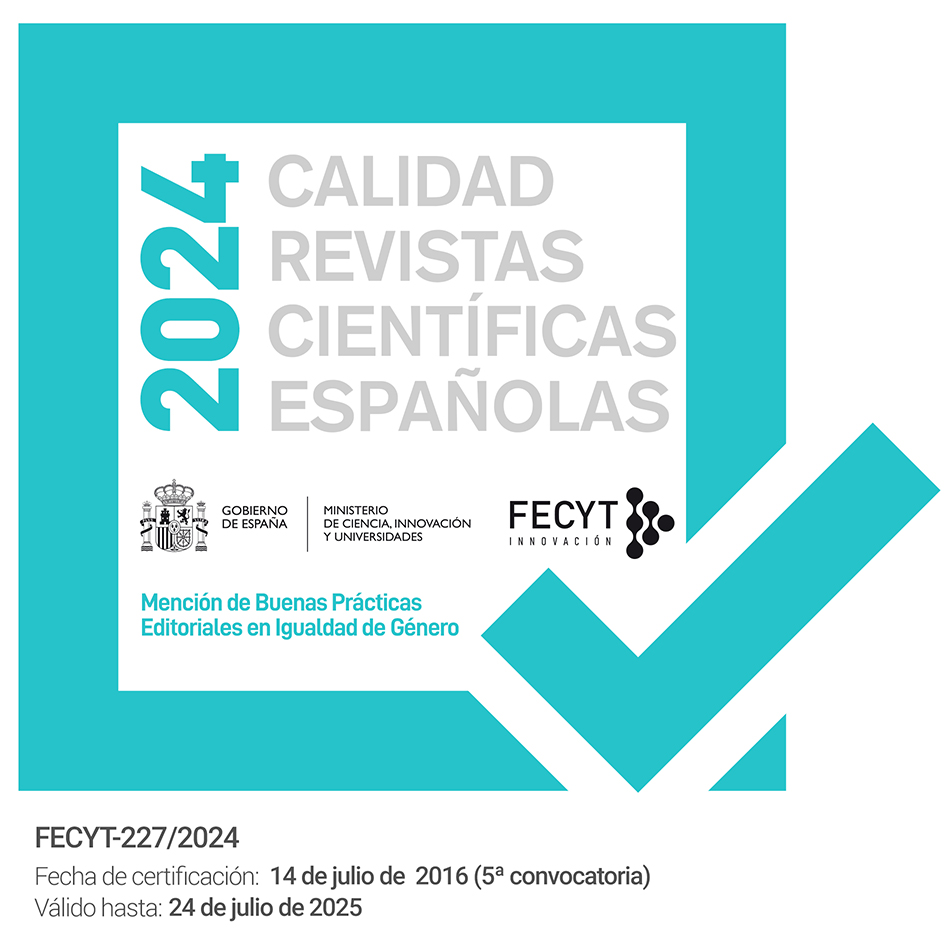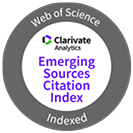Nanoparticles in the Use of Natural Products for the Treatment of Lung Cancer
DOI:
https://doi.org/10.30827/ars.v60i3.9220Keywords:
Nanoparticles, Biological Products, Lung NeoplasmsAbstract
Objective: Carry out a bibliographical survey about the use of nanoparticles in the delivery of natural products for the treatment of lung cancer.
Methods: A bibliographic review was made using the descriptors “Nanoparticles”, “Biological Products” and “Lung Neoplasms”, through the databases ScienceDirect, PubMed and SciELO, in the period from 2009 to 2018.
Results: After analyzing the articles according to the inclusion criteria, we obtained 31 articles, of which 25.81% refer to natural products in the treatment of lung cancer, 29.03% to nanoparticles in the treatment of lung cancer and 45.16 % to nanoparticles as carriers of natural products for the treatment of lung cancer.
Conclusion: The use of nanoparticles allows the delivery of natural products, increasing their therapeutic properties against lung cancer cells, and decreasing the side effects of these highly toxic agents.
Downloads
References
World Health Organization (WHO). International Agency for Research on Cancer (IARC). Estimated number of new cases in 2018, worldwide, both sexes, all ages. Disponível em: http://globocan.iarc.fr. Acesso em: 27 Set 2018.
Wang H, Naghavi M, Allen C, Barber RM, Bhutta ZA, Carter A et al. Global, regional, and national life expectancy, all-cause mortality, and cause-specific mortality for 249 causes of death, 1980-2015: a systematic analysis for the Global Burden of Disease Study 2015. Lancet. 2016;388(10053):1459-1544. Doi: https://doi.org/10.1016/S0140- 6736(16)31012-1.
Brazil. Ministério da Saúde. Instituto Nacional de Câncer José Alencar Gomes da Silva (INCA). Estimativa 2018: Incidência de Câncer no Brasil. Rio de Janeiro: INCA. Available in: http://www.inca.gov.br. Access in: 27 Set 2018.
Allemani C, Weir HK, Carreira H, Harewood R, Spika D, Wang XS et al. Global surveillance of cancer survival 1995-2009: analysis of individual data for 25676887 patients from 279 population-based registries in 67 countries (CONCORD-2). Lancet. 2015;385(9972):977-1010. Doi: 10.1016/S0140-6736(14)62038-9.
Novaes FT, Cataneo DC, Ruiz-Junior RL, Defaveri J, Michelin OC, Cataneo AJM. Lung cancer: histology, staging, treatment and survival. J Bras Pneumol. 2008;34(8):595-600. Doi: 10.1590/S1806-37132008000800009.
Araujo LH, Baldotto C, Castro-Jr G, Katz A, Ferreira CG, Mathias C et al. Lung cancer in Brazil. J Bras Pneumol. 2018;44(1):55-64. Doi: 10.1590/s1806-37562017000000135.
Souza MVN, Pinheiro AC, Ferreira ML, Gonçalves RSB, Lima CHC. Produtos naturais em fase avançada de testes clínicos no tratamento contra o câncer. Rev Fitos. 2007:25-42.
Costa-Lotufo LV, Montenegro RC, Alves APNN, Madeira SVF, Pessoa C, Moraes MEA et al. A contribuição dos produtos naturais como fonte de novos fármacos anticâncer: Estudos no laboratório nacional de oncologia experimental da universidade federal do Ceará. Rev Virtual Quim. 2010;2(1):47-58.
Pimentel LF, Junior-Jácome AT, Mosqueira VCF, Santos-Magalhães NSS. Application of pharmaceutical nanotechnology to the treatment of malária. Rev. Bras. Cienc. Farm. 2007;43(4):503-514.
Thorley AJ, Tetley TD. New perspectives in nanomedicine. Pharmacol Ther. 2013;140(2):176-185. Doi: 10.1016/j.pharmthera.2013.06.008
Mendes KDD, Silveira RCCP, Galvão CM. Integrative literature review: a research method to incorporate evidence in health care and nursing. Contexto Enferm. 2008;17(4):758-764.
Li P, Li S, Gu H, Lu Q, Jiang W, Pei X et al. The exposure-effect-toxicity correlation of docetaxel and magnesium isoglycyrrhizinate in non-small cell lung tumor=bearing mice. Biomed Pharmacother. 2018;97:1000-1010.
Kang TH, Bang JY, Kim MH, Kang IC, Kim HM, Jeong HJ. Atractylenolide III, a sesquiterpenoid, induces apoptosis in human lung carcinoma A549 cells via mitochondria-mediated death pathway. Food Chem Toxicol. 2011;49(2):514-519.
Czerwonka A, Kalawaj K, Brych AS, Lemieszek MK, Bartnik M, Wojtanowski K et al. Anticancer effect of the water extract of a commercial Spirulina (Arthrospira platensis) product on the human lung cancer A549 cell line. Biomed Pharmacother. 2018;106:292-302.
Gorzalczany Y, Gilad Y, Amihai D, Hammel I, Eisenberg RS, Merimsky O. Combining an EGFR directed tyrosine kinase inhibitor with autophagy-inducing drugs: A beneficial strategy to combat non-small cell lung cancer. Cancer Lett. 2011;310(2):207-215.
Karthik S, Sankar R, Varunkumar K, Ravikumar V. Romidepsin induces cell cycle arrest, apoptosis, histone hyperacetylation and reduces matrix metalloproteinases 2 and 9 expression in bortezomib sensitized non-small cell lung cancer cells. Biomed Pharmacother. 2014;68(3):327-334.
Luu M, Sabo E, Monte SM, Greaves W, Wang J, Tavares R et al. Prognostic value of aspartyl (asparaginyl)-β-hydroxylase/humbug expression. In non-small cell lung carcinoma. Hum Pathol. 2009;40(5):639-644.
Imaizumi A. Highly bioavailable curcumin (Theracurmin): Its development and clinical application. PharmaNutrition. 2015;3(4):123-130.
Matikas A, Mistriotis D, Georgoulias V, Kotsakis A. Targeting KRAS mutated non-small cell lung cancer: a history of failures and a future of hope for a diverse entity. Crit Rev Oncol Hematol. 2017;110:1-12.
Morgensztern D, Campo MJ, Dahlberg SE, Doebele RC, Garon E, Gerber DE et al. Molecularly Targeted Therapies in Non-Small-Cell Lung Cancer Annual Update 2014. J Thorac Oncol. 2015;10(1):S1-S63.
Drilon A, Rekhtman N, Ladanyi M, Paik P. Squamous-cell carcinomas of the lung: emerging biology, controversies, and the promise of targeted therapy. Lancet Oncol. 2012;13(10):e418-e426.
Nair HB, Sung B, Yadav VR, Kannappan R, Chaturvedi MM, Aggarwal BB. Delivery of anti-inflammatory nutraceuticals by nanoparticles for the prevention and treatment of cancer. Biochem Pharmacol. 2010;80(12):1833-1843.
Cho K, Wang X, Nie S, Chen Z, Shin DM. Therapeutic nanoparticles for drug delivery in cancer. Clin Cancer Res. 2008;14(5):1310-1316.
Mohanta D, Patnaik S, Sood S, Das N. Carbon nanotubes: evaluation of toxicity at biointerfaces. J Pharm Anal. 2019. Doi: 10.1016/j.jpha.2019.04.003.
Pinho RAS, Figueiras AR. Aplicações terapêuticas de sistemas micelares poliméricos. Boletim Informativo Geum. 2016;7(2):48-62.
Zaborski C. Why are liposomes so good for the skin? Spa Canada. 2017.
Sharma G, Kumar A, Sharma S, Naushad M, Dwivedi RP, ALOthman ZA et al. Novel development of nanoparticles to bimetallic nanoparticles and their composites: a review. J King Saud Univ. 2019;31:257-269.
Rychahou P, Bae Y, Reichel D, Zaytseva YY, Lee EY, Napier D et al. Colorectal cancer lung metastasis treatment with polymer-drug nanoparticles. J Control Release. 2018;275:85-91.
Masood F, Chen P, Yasin T, Fátima N, Hasan F, Hameed A. Encapsulation of Ellipticine in poly-(3-hydroxybutyrate-co-3-hydroxyvalerate) based nanoparticles and its in vitro application. Mater Sci Eng C. 2013;33(3):1054-1060.
Kumar N, Salar RK, Prasad M, Ranjan K. Synthesis, characterization and anticancer activity of vincristine loaded folic acid-chitosan conjugated nanoparticles on NCI-H460 non-small cell lung cancer cell line. Egypt J Basic Appl Sci. 2018;5(1):87-99.
Mir TA, Yoon J-H, Gurudatt NG, Won M-S, Shim Y-B. Ultrasensitive cytosensing based on an aptamer modified nanobiosensor with a bioconjugate: Detection of human non-small-cell lung cancer cells. Biosens Bioelectron. 2015;74:594-600.
Liang Z, Yang N, Yao J, Hou C, Zheng J, Shi J et al. Targeting docetaxel-PLA nanoparticles simultaneously inhibit tumor growth and liver metastases of small cell lung cancer. Int J Pharm. 2015;494(1):337-345.
Jeannot V, Mazzaferro S, Lavaud J, Vanwonterghem L, Henry M, Arboleas M et al. Targeting CD44 receptor-positive lung tumors using polysaccharide-based nanocarriers: influence of nanoparticle size and administration route. Nanomedicine. 2016;12(4):921-932.
Samadi S, Moradkhani M, Beheshti H, Irani M, Aliabadi M. Fabrication of chitosan/poly(lactic acid)/grapheme oxide/TiO2 composite nanofibrous scaffolds for sustained delivery of doxorubicin and treatment of lung cancer. Int J Biol Macromol. 2018;110:416-424.
Maya S, Sarmento B, Lakshmanan VK, Menon D, Seabra V, Jayakumar R. Chitosan cross-linked docetaxel loaded EGF receptor targeted nanoparticles for lung cancer cells. Int J Biol Macromol. 2014;69:532-541.
Singh RP, Sharma G, Sonali, Singh S, Bharti S, Pandey BL et al. Chitosan-folate decorated carbon nanotubes for site specific lung cancer delivery. Mater Sci Eng C. 2017;77:446-458.
Gorain B, Choudhury H, Pandey M, Kesharwani P. Paclitaxel loaded vitamin E-TPGS nanoparticles for cancer therapy. Mater Sci Eng C. 2018;91:868-880.
Ignjatovic NL, Penov-Gasi KM, Ajdukovic JJ, Kojic VV, Markovic SB, Uskokovic DP. The effect of the androstane lung cancer inhibitor content on the cell-selective toxicity of hydroxyapatite-chitosan-PLGA nanocomposites. Mater Sci Eng C. 2018;89:371-377.
Chen MH, Hanagata N, Ikoma T, Huang JY, Li KY, Lin CP et al. Hafnium-doped hydroxyapatite nanoparticles with ionizing radiation for lung cancer treatment. Acta Biomater. 2016;37:165-173.
Muddineti OS, Shah A, Rompicharla VSK, Ghosh B, Biswas S. Cholesterol-grafted chitosan micelles as a nanocarrier system for drug-siRNA co-delivery to the lung cancer cells. Int J Biol Macromol. 2018;118(Pt A):857-863.
Ibrahim S, Tagami T, Kishi T, Ozeki T. Curcumin marinosomes as promising nano-drug delivery system for lung cancer. Int J Pharm. 2018;540(1-2):40-49.
Gengan RM, Anand K, Phulukdaree A, Chuturgoon A. A549 lung cell line activity of biosynthesized silver nanoparticles using Albizia adianthifolia leaf. Colloids Surf B Biointerfaces. 2013;105:87-91.
Dadashpour M, Firouzi-Amandi A, Pourhassan-Moghaddam M, Maleki MJ, Soozangar N, Jeddi F et al. Biomimetic synthesis of silver nanoparticles using Matricaria chamomilla extract and their potential anticancer activity against human lung cancer cells. Mater Sci Eng C Mater Biol Appl. 2018;92:902-912.
Published
How to Cite
Issue
Section
License
Copyright (c) 2019 Iago Dillion Lima Cavalcanti, José Cleberson Santos Soares, Wellington Francisco Pereira da Silva, Beatriz Gomes Silva, Ivone Antônia de Souza

This work is licensed under a Creative Commons Attribution-NonCommercial-ShareAlike 4.0 International License.
The articles, which are published in this journal, are subject to the following terms in relation to the rights of patrimonial or exploitation:
- The authors will keep their copyright and guarantee to the journal the right of first publication of their work, which will be distributed with a Creative Commons BY-NC-SA 4.0 license that allows third parties to reuse the work whenever its author, quote the original source and do not make commercial use of it.
b. The authors may adopt other non-exclusive licensing agreements for the distribution of the published version of the work (e.g., deposit it in an institutional telematic file or publish it in a monographic volume) provided that the original source of its publication is indicated.
c. Authors are allowed and advised to disseminate their work through the Internet (e.g. in institutional repositories or on their website) before and during the submission process, which can produce interesting exchanges and increase citations of the published work. (See The effect of open access).























